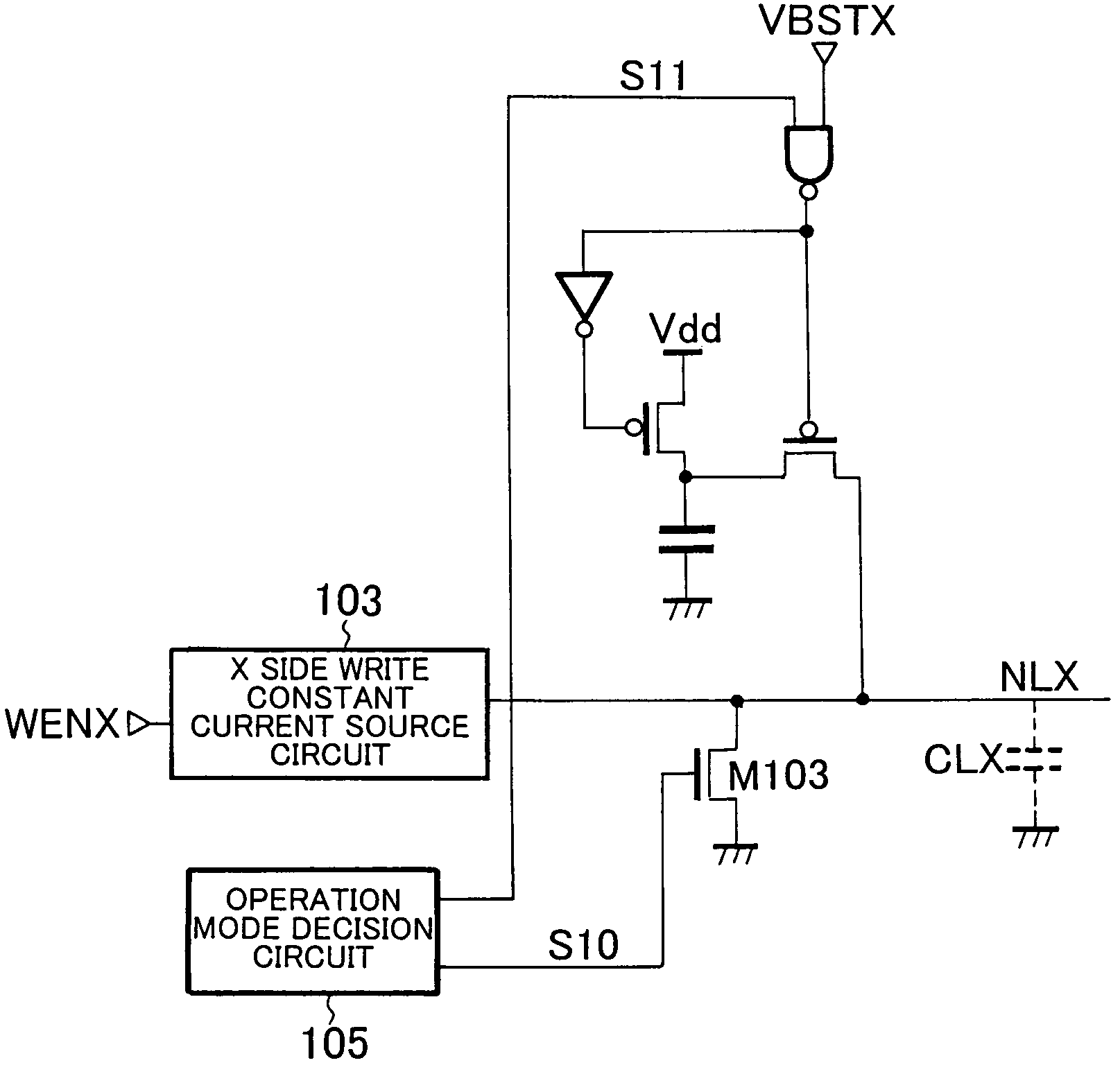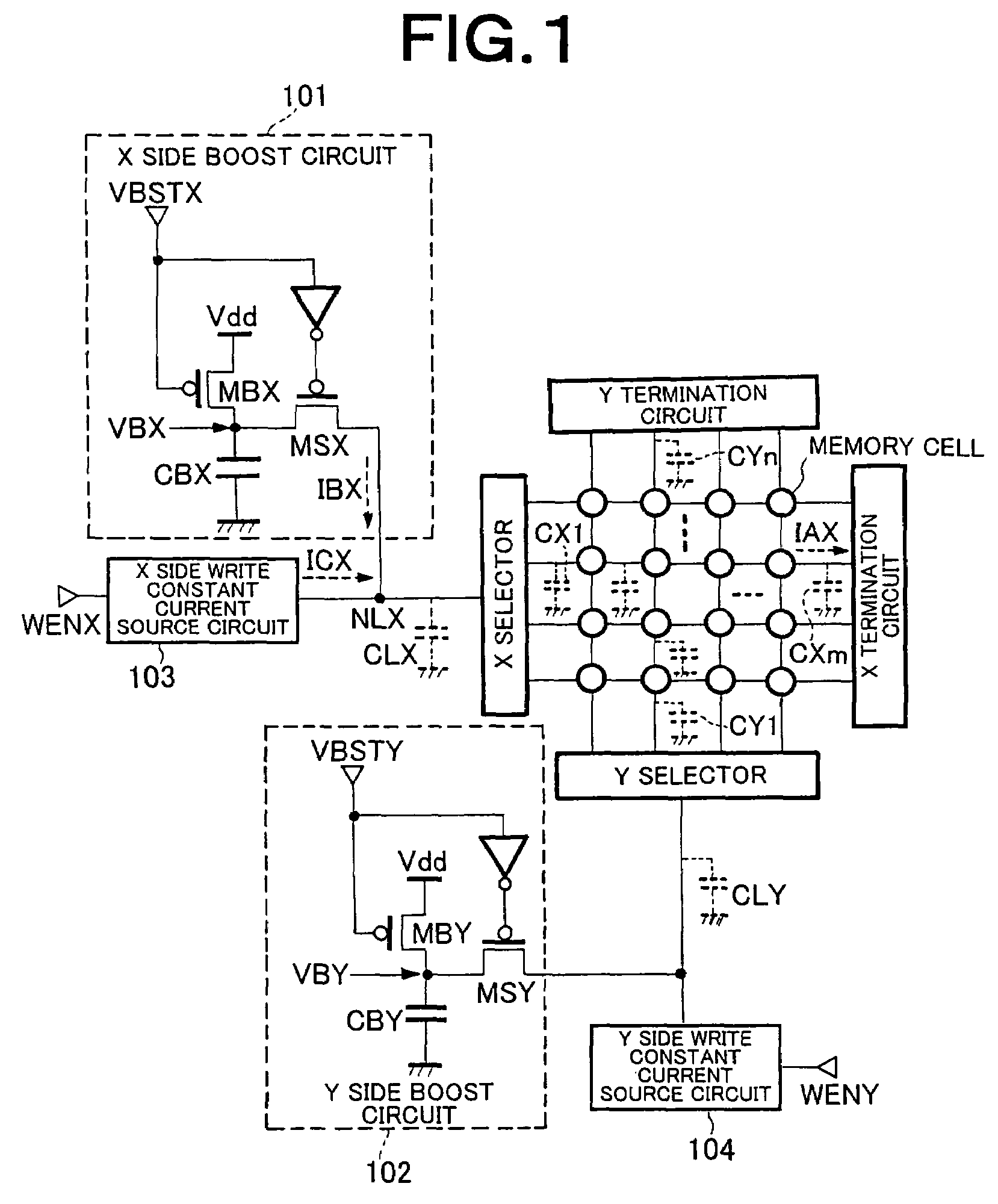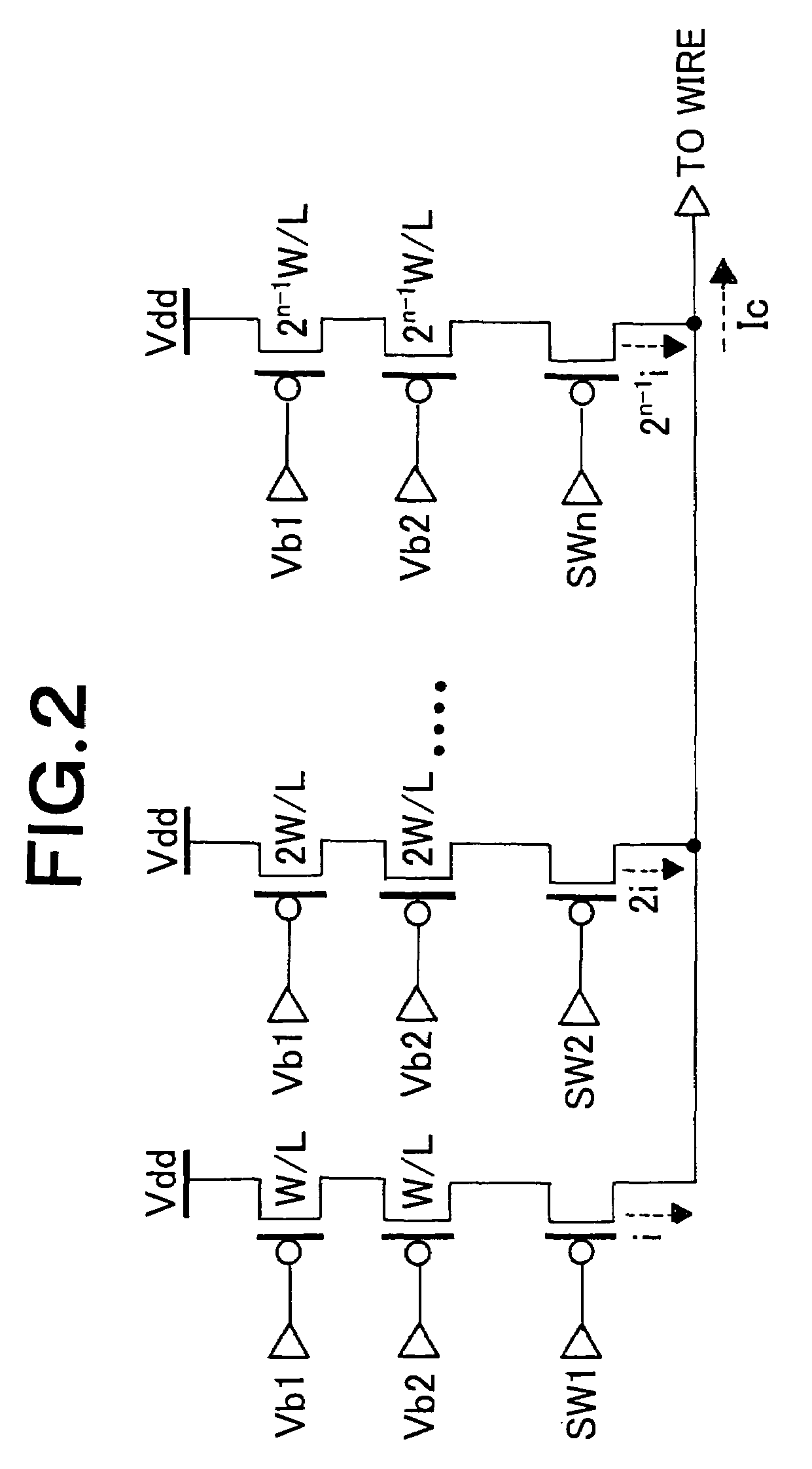Semiconductor storage apparatus
a technology of memory device and semiconductor, applied in the direction of information storage, static storage, digital storage, etc., can solve the problems of increasing power consumption at the time of writing, wasting current, and affecting the speed of writing, so as to achieve short time, shorten writing time, and improve writing speed
- Summary
- Abstract
- Description
- Claims
- Application Information
AI Technical Summary
Benefits of technology
Problems solved by technology
Method used
Image
Examples
first embodiment
[0065]A semiconductor memory device according to the first embodiment of the present invention will now be described.
[0066]FIG. 1 is a block diagram showing a configuration of the semiconductor memory device according to the first embodiment of the present invention. In an X side boost circuit 101 shown in FIG. 1, one end of a boost capacitor CBX is connected to the ground and the other end thereof is connected to a PMOS transistor MSX and a PMOS transistor MBX via a terminal VBX. The other end of the PMOS transistor MBX is connected to a power supply voltage Vdd. At the time of boost standby (VBSTX=L level (GND)), the PMOS transistor MSX is in the off-state and the PMOS transistor MBX is in the on-state and consequently charge QB=CBX×Vdd is stored on the boost capacitor CBX. In a Y side boost circuit 102 as well, similar operation is conducted. Each of an X side write constant current circuit 103 and a Y side write constant current circuit 104 is a current source having a large out...
second embodiment
[0070]A semiconductor memory device according to the second embodiment of the present invention will now be described. The second embodiment aims at further shortening the write time by boosting the voltage applied to the boost capacitors CBX and CBY described in the first embodiment, thereby increasing the amount of charge that can be stored. Furthermore, according to the present circuit configuration, the amount of charge per unit area of capacitor stored on the boost capacitors CBX and CBY becomes large. This results in an advantage that the area of the boost capacitors CBX and CBY can be made small.
[0071]First, operation of the boost circuit will now be described with reference to FIG. 4A. It is supposed that the threshold voltage of a diode is Vt. At the time of standby, a potential at an input terminal A1 is V(A1)=0, a potential at an output terminal VBT is V(VBT)=Vdd−2Vt, and a potential at a node A2 is V(A2)=Vdd−Vt. If V(A1) is changed to V(A1)=Vdd in this state, the potenti...
third embodiment
[0077]A semiconductor memory device according to the third embodiment of the present invention will now be described.
[0078]In the third embodiment, a current boost circuit is applied to the large storage capacity array shown in FIG. 20. A write circuit diagram used in this embodiment is shown in FIG. 7. An X side current boost capacitor array 111 and an X side capacitor selector 112 are connected to X side main wire 113. AY side current boost capacitor array 114 and a Y side capacitor selector 115 are connected to Y side main wire 116. This is a feature of the third embodiment. Write switching between “0” and “1” is conducted by switching the Y side write current direction. In order to make it possible to add a boost current to the write current of both directions, capacitor arrays and capacitor selectors of two systems (represented as L and R) are prepared on the Y side. Since X side write operation is basically the same as the Y side write operation, only the X side writing will b...
PUM
 Login to View More
Login to View More Abstract
Description
Claims
Application Information
 Login to View More
Login to View More - R&D
- Intellectual Property
- Life Sciences
- Materials
- Tech Scout
- Unparalleled Data Quality
- Higher Quality Content
- 60% Fewer Hallucinations
Browse by: Latest US Patents, China's latest patents, Technical Efficacy Thesaurus, Application Domain, Technology Topic, Popular Technical Reports.
© 2025 PatSnap. All rights reserved.Legal|Privacy policy|Modern Slavery Act Transparency Statement|Sitemap|About US| Contact US: help@patsnap.com



